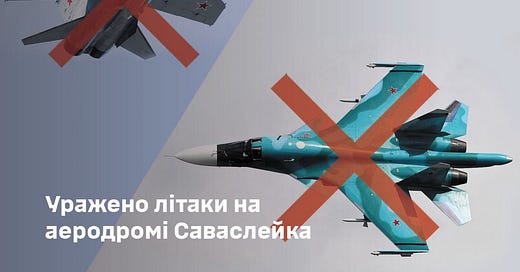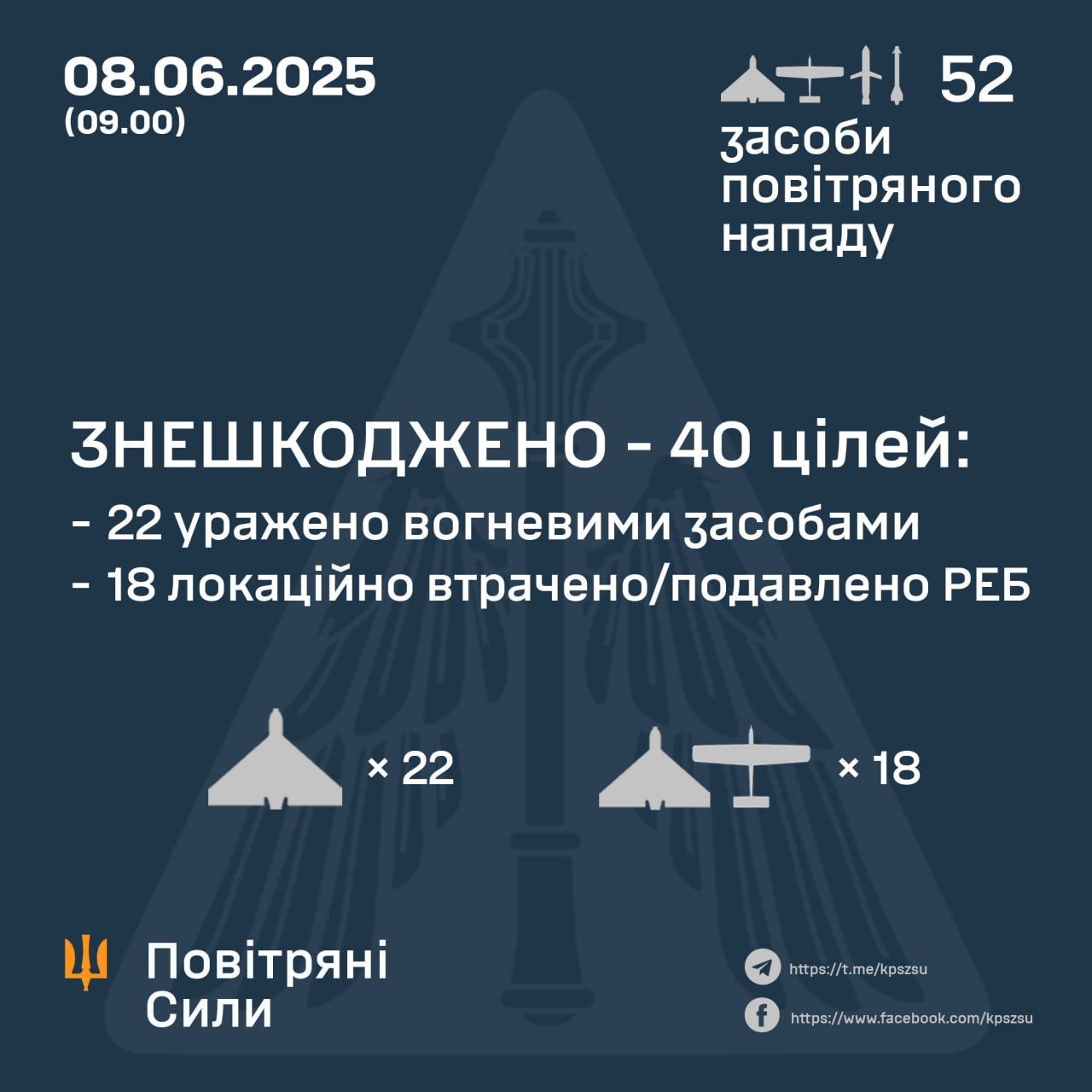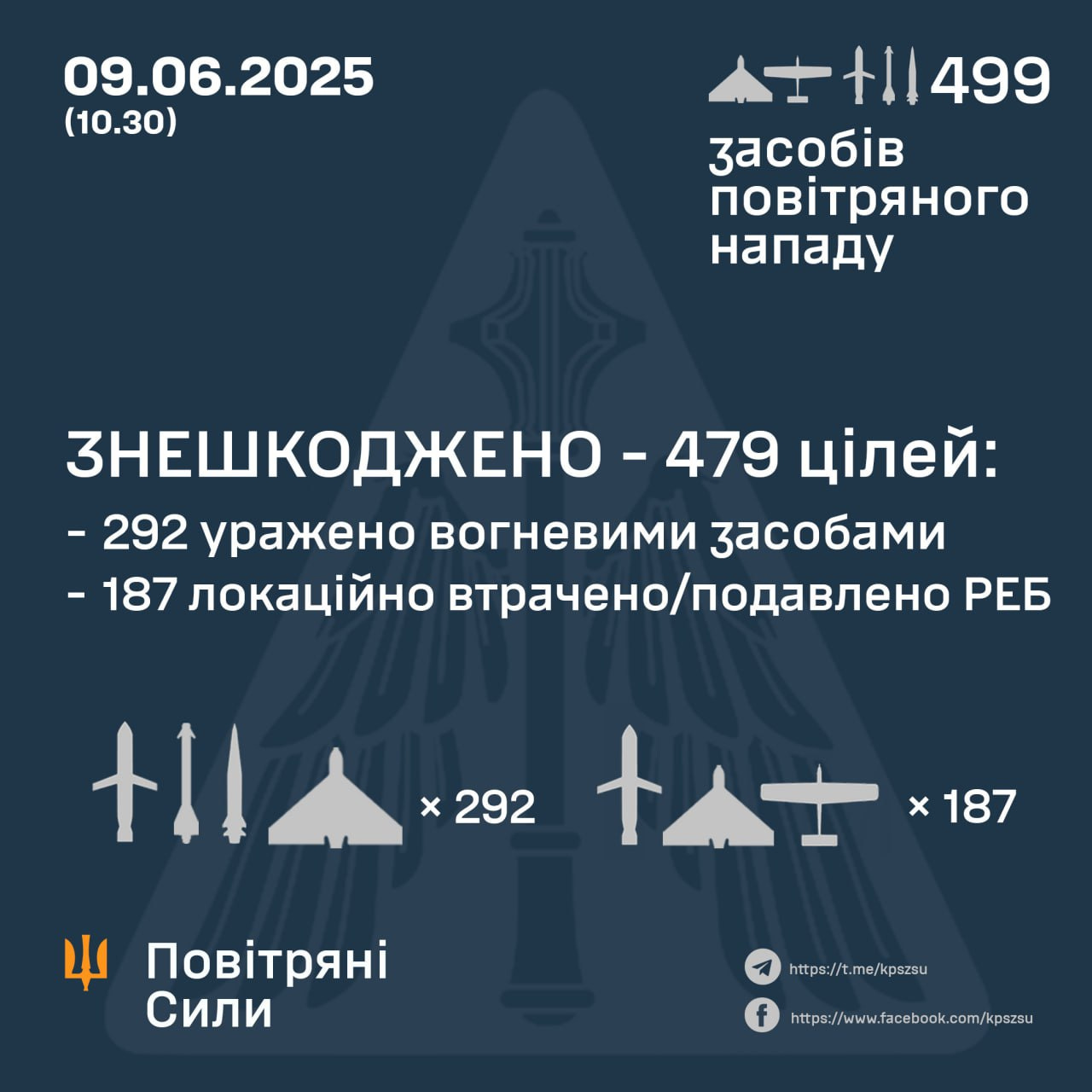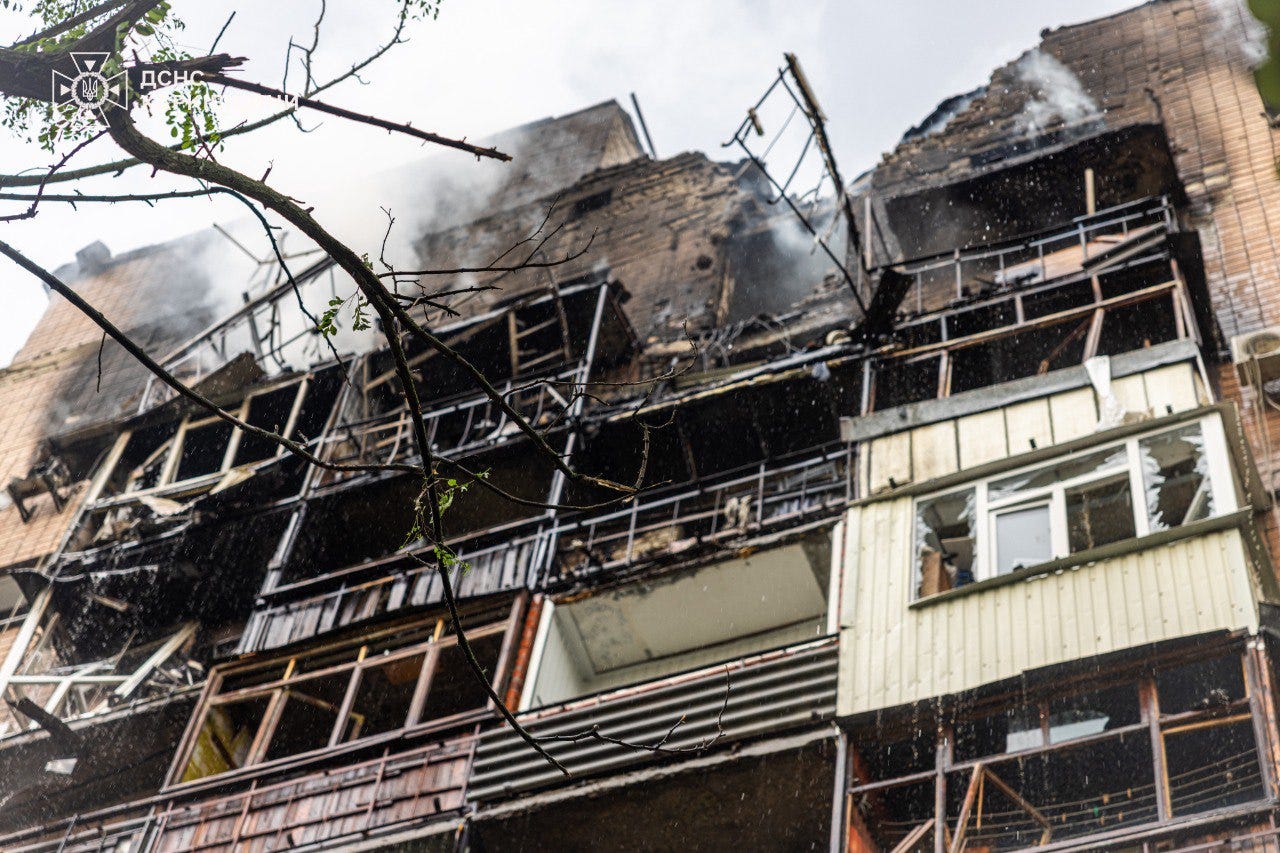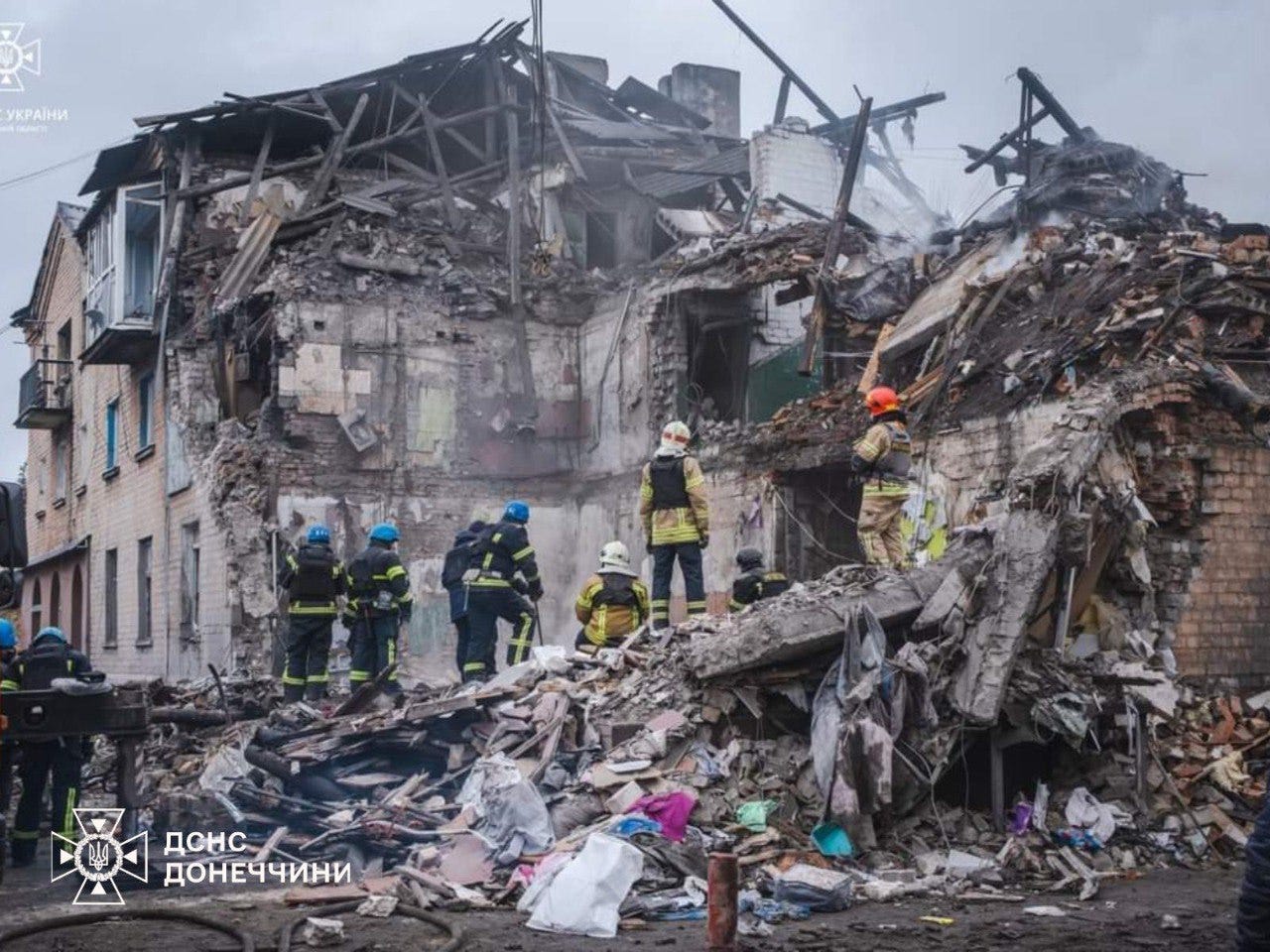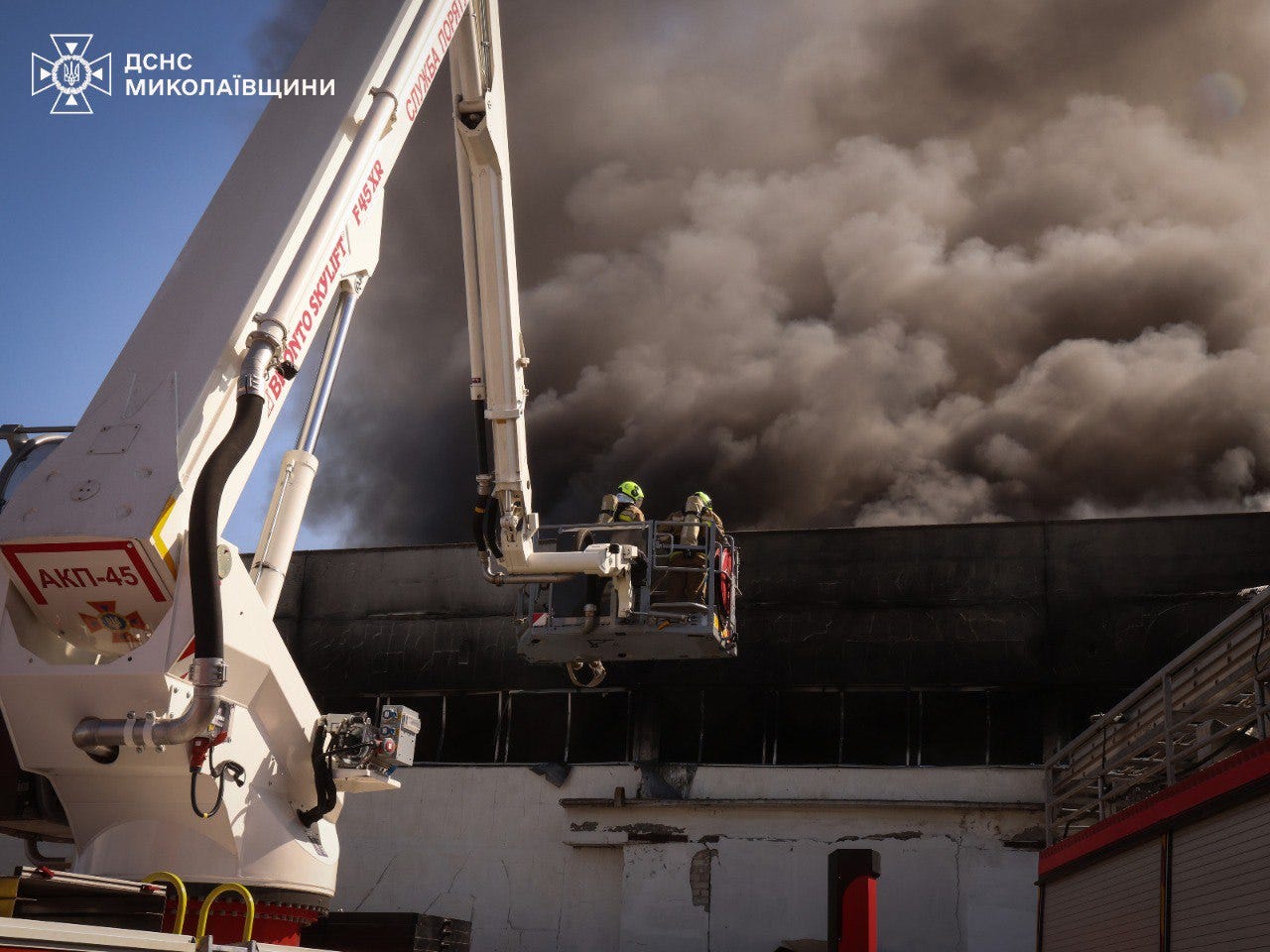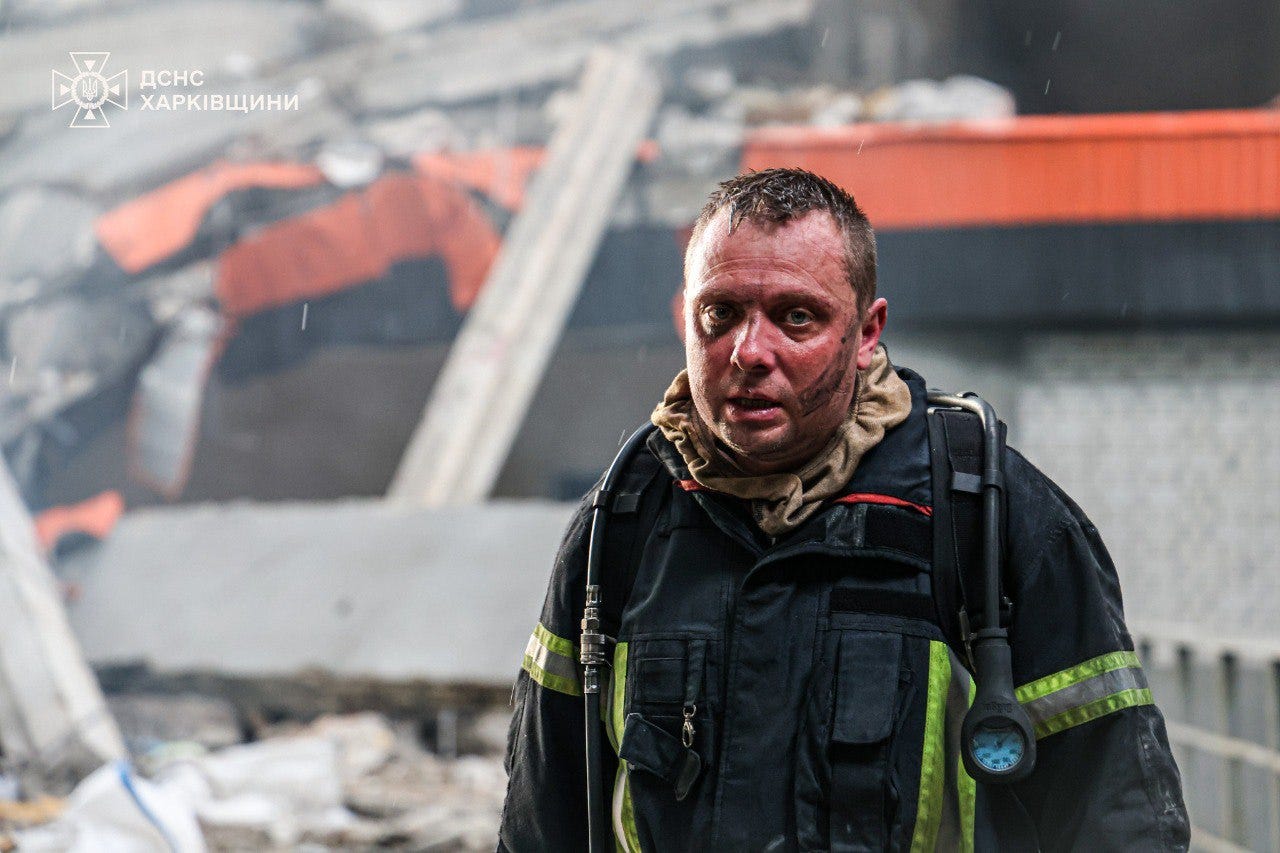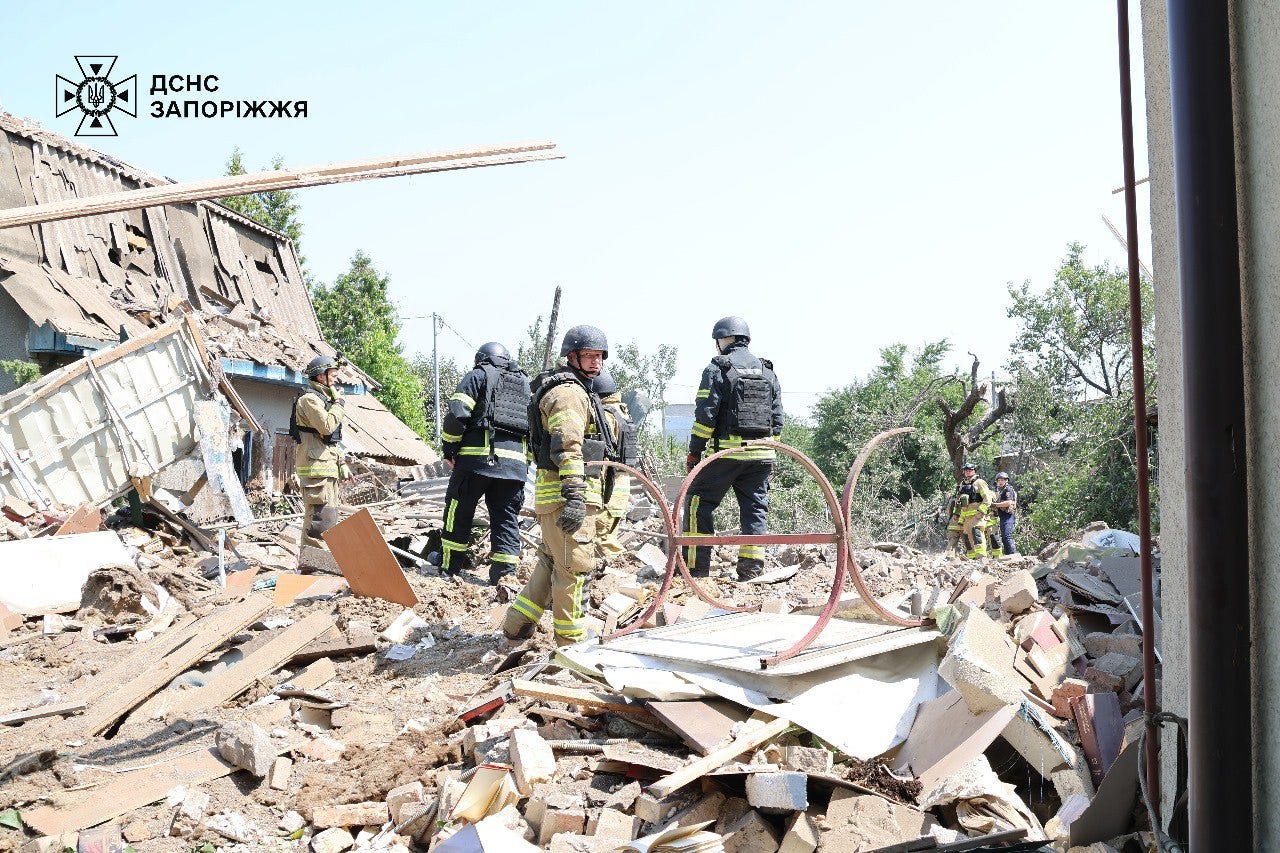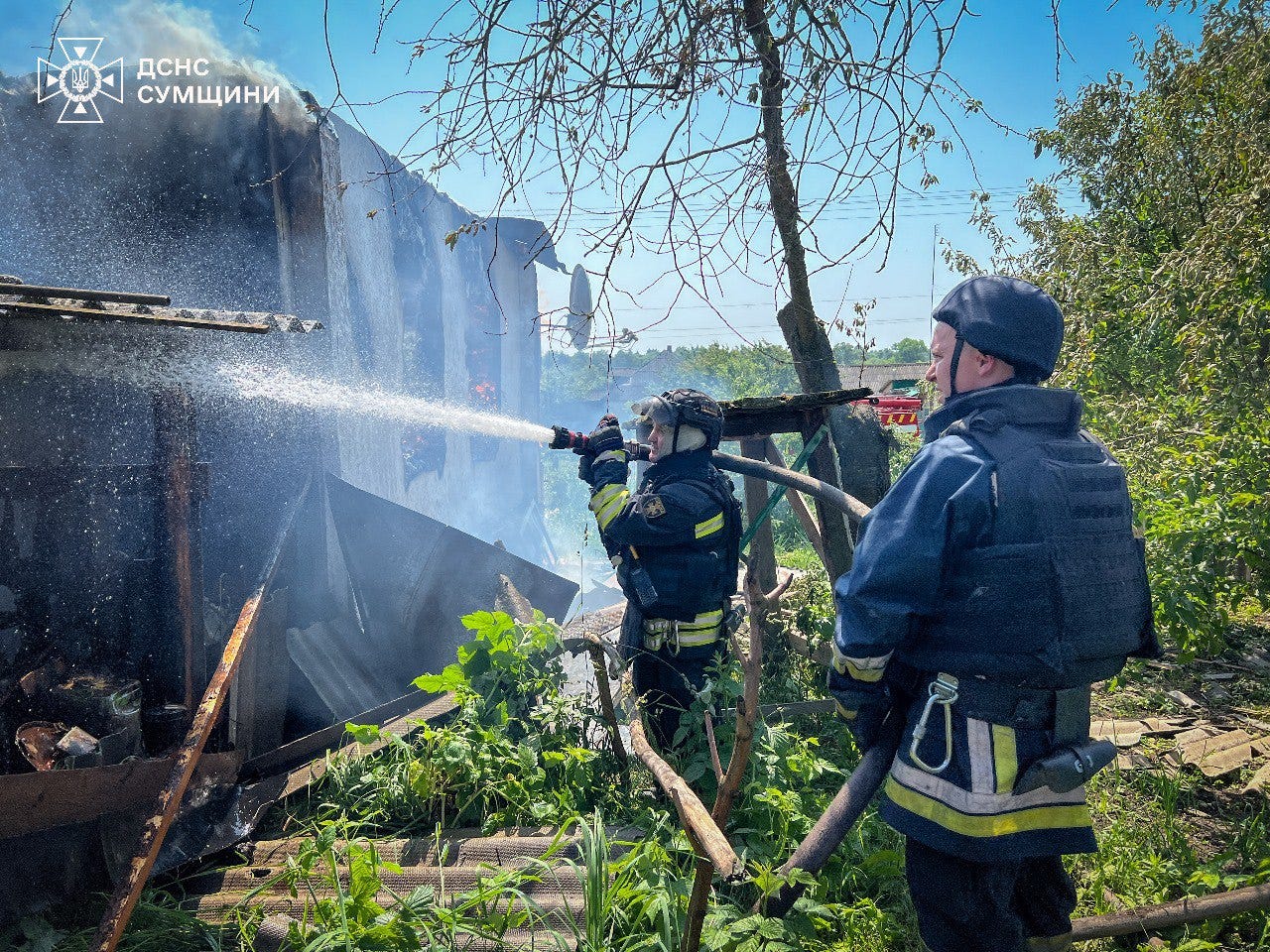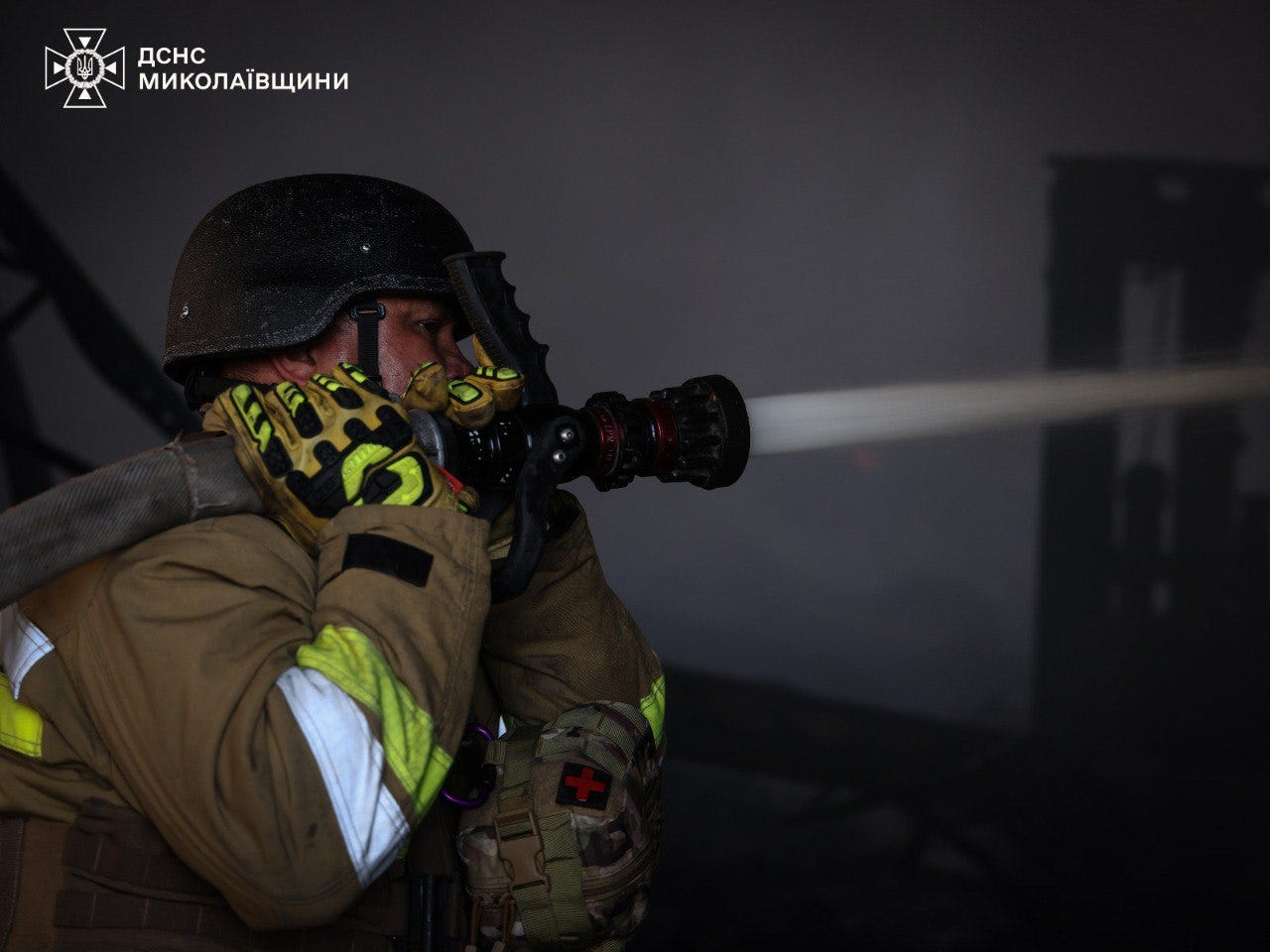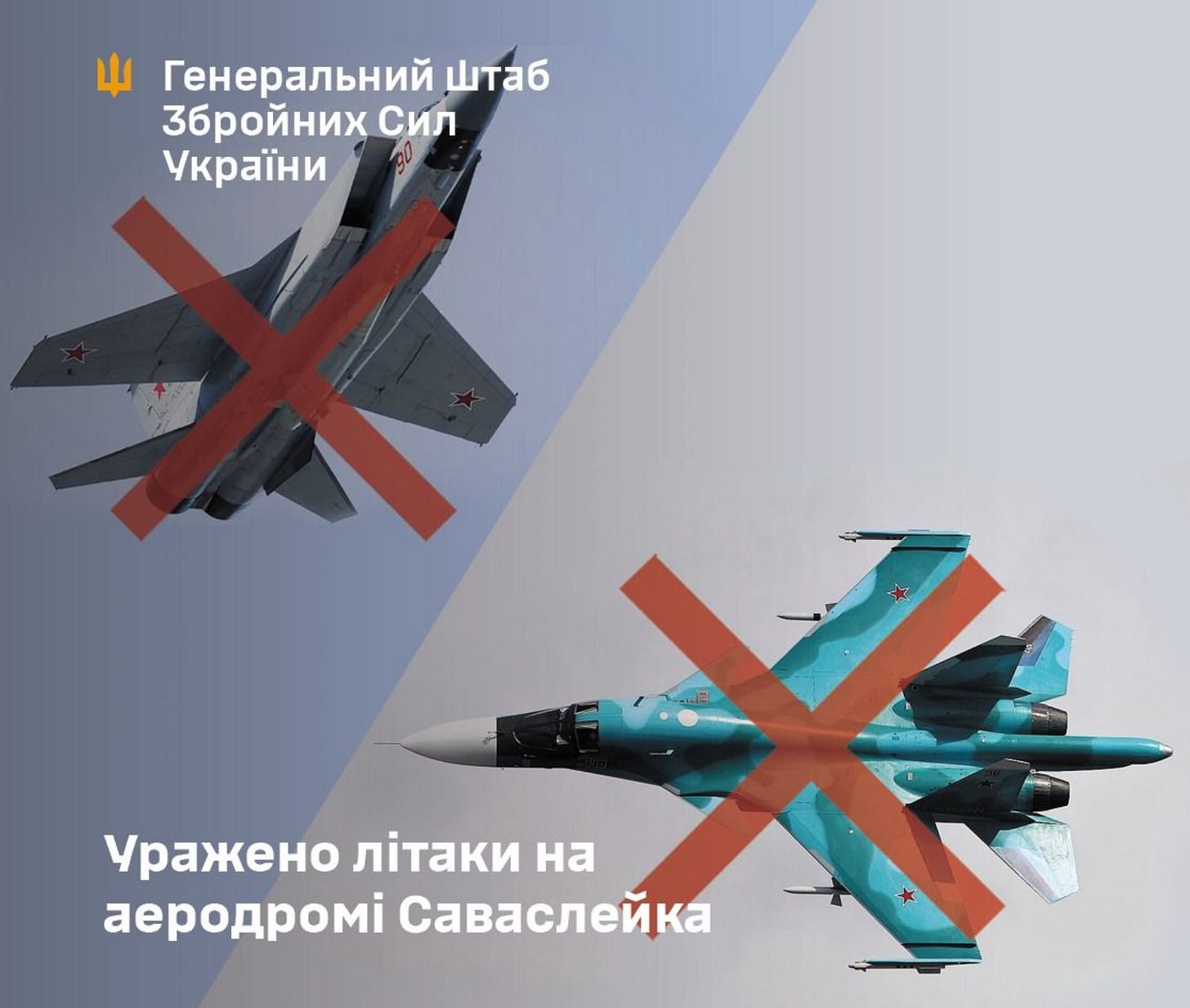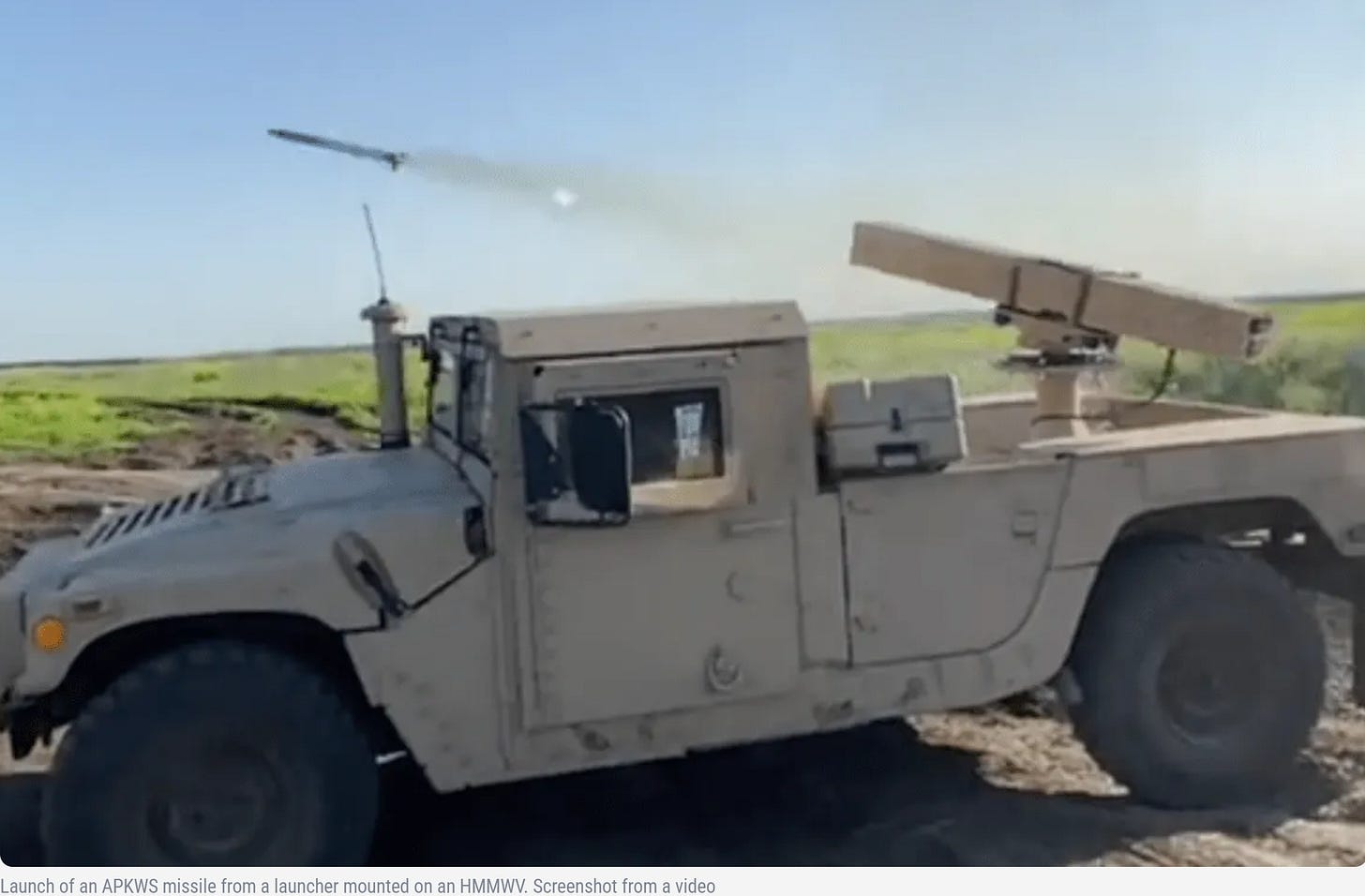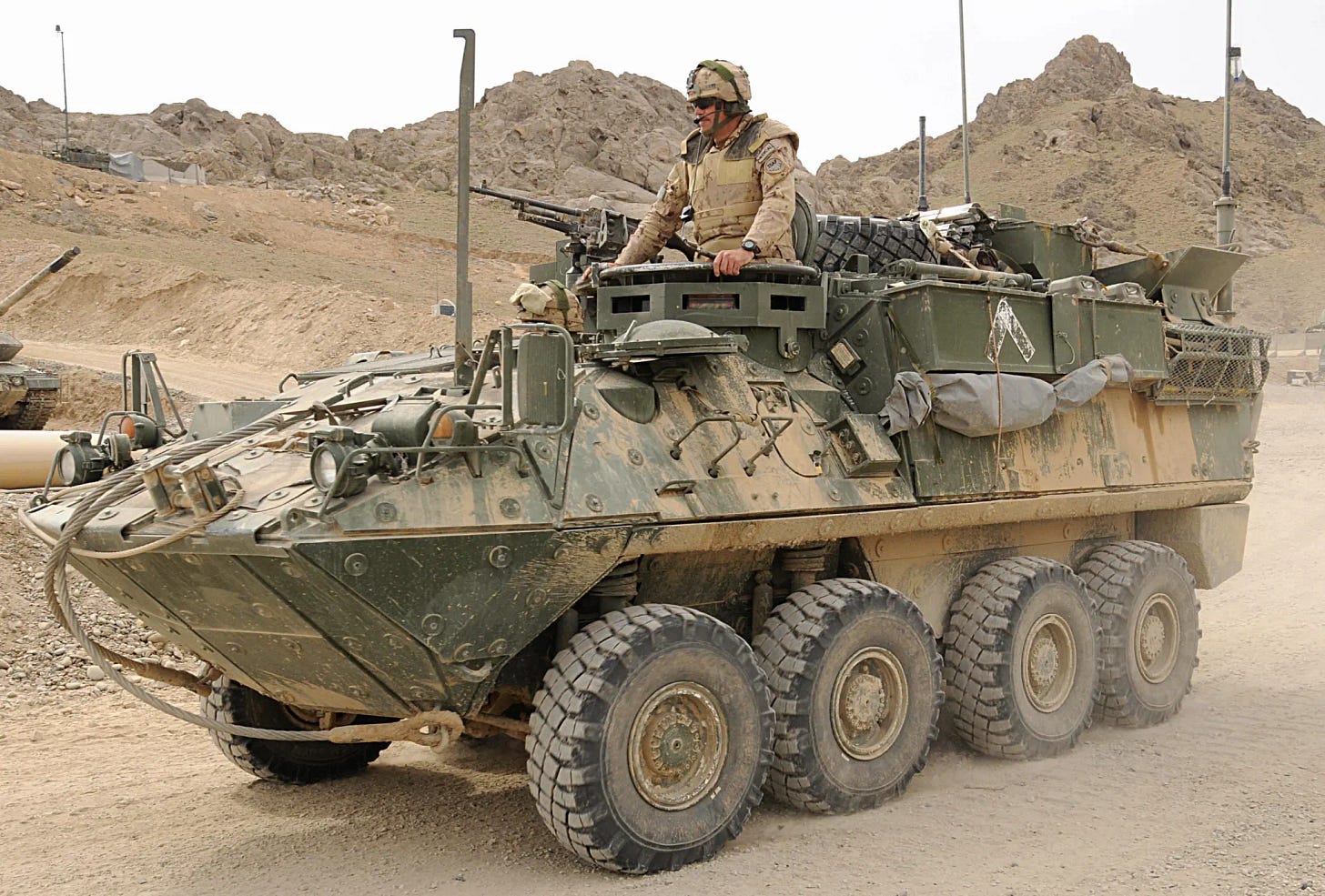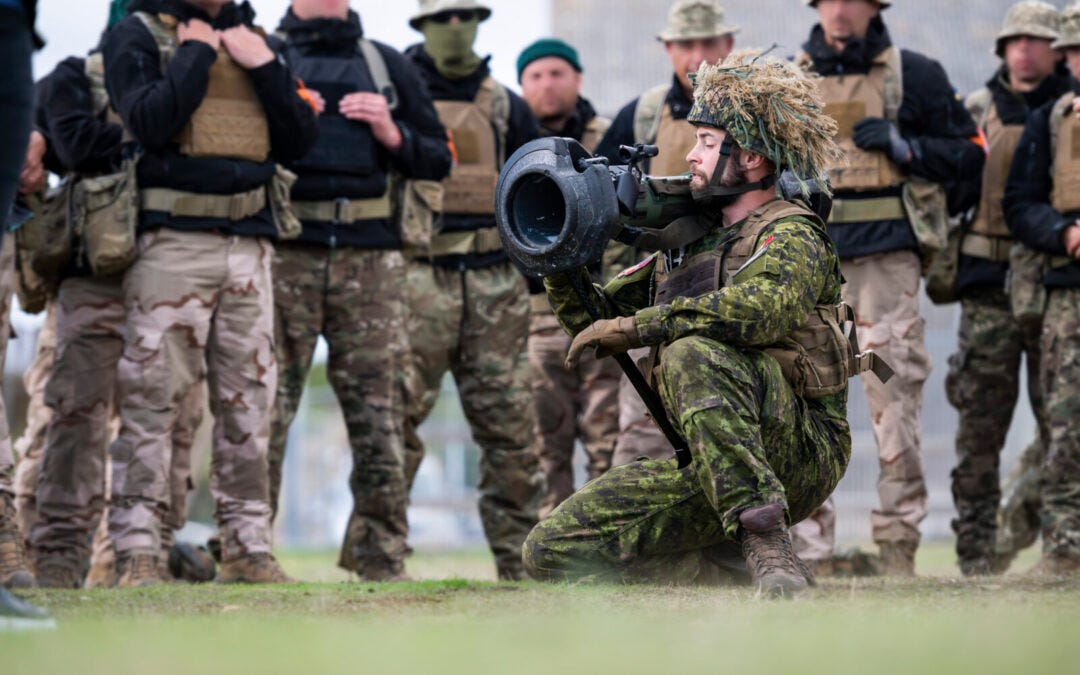Slava Ukraini! In early 2022 I began a Telegram channel aggregating news from a number of sources daily on the war in Ukraine. In June 2023 I began providing a daily draft for the Ukraine War Brief Podcast collecting news from over 70 sources daily, which formed the basis of the script. While the Podcast no longer exists I have continued to make this Brief available for my followers here on Substack for those who wish to keep up with the news from the war.
If you find the Brief informative I would appreciate it if you shared it with others.
All the latest news on the Russo-Ukraine War 6 days per week
ALONG THE CONTACT LINE
GSAFU Morning Report
For: Jun 9, 2025
The General Staff of the Armed Forces of Ukraine in its Operational Information update at 08:00 on Jun 9 stated that day 1202 of the full-scale invasion of the Russian Federation against Ukraine had begun.
The situation on the line of combat remains tense in some sectors. Ukrainian defenders continue to actively counteract the Russian aggressor, causing them significant losses in personnel, equipment and technology. Exhausting the enemy along the entire front line and continuing to disrupt the plans of Russian occupiers to advance deeper into the territory of Ukraine.
Over the past 48 hours, aviation, missile troops and artillery of the Defense Forces have hit 28 personnel and equipment concentration areas, 8 artillery systems, a command observation point, a BPLA control point, a Russian military service station. and one REB station.
During the past two days, 352 combat engagements took place.
Over the past 48 hours, the enemy carried out 5 missile strikes, 175 air strikes, used 6,205 attack drones and fired approximately 11,700 artillery shells across the positions of Ukrainian forces and civilians.
Air Force Daily Report
40 ENEMY UAVS DESTROYED
➖➖➖➖➖➖➖➖➖
On the night of Jun 8 (from 9:00 p.m. on Jun 7), the enemy attacked with 49 Shahed attack UAVs and simulator drones of various types from the directions: Kursk, Millerovo, Primorsko-Akhtarsk - Russia, as well as an Onyx anti-ship missile (launched from Crimea), two Kh-59/69 guided aircraft missiles (launched from the airspace of the Zaporizhia Oblast TOT).
The main areas of the air strike are the Kharkiv and Donetsk regions.
The air attack was repelled by aviation, anti-aircraft missile troops, electronic warfare and unmanned systems units, and mobile fire groups of the Defense Forces of Ukraine.
As of 09:00, air defenses neutralized 40 enemy Shahed UAVs (and other types of UAVs) in the east, south, north, and center of the country. 22 were shot down by fire weapons, 18 were lost/suppressed by electronic warfare.
Enemy air attack targets were recorded in 5 locations.
479 ENEMY AIR ATTACK VEHICLES DESTROYED
➖➖➖➖➖➖➖➖➖
On the night of June 9 (from 8:00 p.m. on June 8), the enemy attacked with 499 air attack vehicles:
- 479 Shahed attack UAVs and simulator drones of various types from the following directions: Kursk, Shatalovo, Orel, Millerovo, Primorsko-Akhtarsk – Russia;
- 4 Kh-47 M2 Kinzhal aeroballistic missiles from Tambov region – Russia;
- 10 Kh-101 cruise missiles from the Saratov region - Russia;
- 3 Kh-22 cruise missiles from the airspace over the Black Sea;
- 2 Kh-31P anti-radiation missiles from the airspace over the Black Sea;
- 1 Kh-35 cruise missile from the Crimean Autonomous Republic.
The air attack was repelled by aviation, anti-aircraft missile troops, electronic warfare and unmanned systems units, and mobile fire groups of the Defense Forces of Ukraine.
According to preliminary data, as of 10:30, air defenses neutralized 479 enemy air attack vehicles, 292 were shot down by fire weapons, and 187 were lost in location:
- 277 enemy Shahed UAVs (drones of other types) were shot down by fire, 183 were lost/suppressed by electronic warfare;
- 10 X-101 cruise missiles;
- 4 Kh-47 M2 Kinzhal aeroballistic missiles;
- 2 Kh-22 cruise missiles - did not reach their targets (lost in location);
- 2 Kh-31P anti-radar missiles;
- 1 Kh-35 cruise missile.
Enemy airstrikes were recorded in 10 locations, and downed aircraft (fragments) fell in 17 locations.
Combat Operations in the Russian Federation
There has been no significant change in the combat environment in this sector since our last report.
The Khortytsia operational-strategic group
(Responsible for the northeastern part of Ukraine. )
Toretsk Sector: Ukrainian and Russian forces recently advanced in the Toretsk direction.
Geolocated footage published on Jun 6 indicates that Ukrainian forces recently advanced south of Yablunivka (northwest of Toretsk).
Geolocated footage published on Jun 8 indicates that Russian forces recently marginally advanced in a mine northwest of Toretsk.
The Tavria operational-strategic group
(Responsible for the central-eastern and southeastern part of Ukraine.)
Pokrovsk Sector : Russian forces recently advanced in the Pokrovsk direction.
Geolocated footage published on June 8 indicates that Russian forces recently advanced north of Shevchenko (south of Pokrovsk).
ISW assesses that this advance did not occur within the last 24 hours.
The Odesa operational-strategic group
(Responsible for Kherson, Qırım, (also known as Crimea) and the Black Sea.)
There has been no significant change in the combat environment in this sector since our last report.
TEMPORARILY OCCUPIED TERRITORIES
Nothing major to report.
THE HOME FRONT
12 killed, 65 injured in Russian attacks on Ukraine on Jun 7.
At least 12 civilians were killed and 65 others injured in Russian attacks across Ukraine over the past 24 hours, regional officials reported on June 8.
Six civilians were killed and 44 injured in Kharkiv Oblast, including in the city of Kharkiv and nine surrounding settlements, according to Ukraine's National Police.
Among the victims were two children — a one-and-a-half-month-old infant and a 14-year-old girl — as well as two police officers and a State Emergency Service employee.
In Donetsk Oblast, Russian strikes killed four people — two in Yablunivka, one in Kostyantynivka, and one in Siversk — Governor Vadym Filashkin said. Nine more were injured in ongoing shelling across the front-line region.
In southern Ukraine, one civilian was killed and nine others injured in Kherson Oblast, where Russia struck residential areas and critical infrastructure, according to Governor Oleksandr Prokudin.
In Dnipropetrovsk Oblast, one man was killed when Russian forces dropped three guided aerial bombs late on June 7, Governor Serhii Lysak reported.
Two women were injured in Sumy Oblast early on June 8 when a strike drone hit the region. One of the victims is pregnant, local authorities reported.
One additional injury was recorded in Zaporizhzhia Oblast, where Russia carried out fresh attacks on settlements, Governor Ivan Fedorov said.
The attacks come as Moscow continues rejecting a complete ceasefire and escalates strikes targeting civilian areas across Ukraine.
Russian missiles target western Ukraine in latest mass attack.
Russia launched another large-scale attack against Ukraine overnight on June 9, assailing cities across the country with drones and missiles, the Kyiv Independent reported citing local officials.
At least one person was reported injured in Rivne, a city far from the front lines in northwestern Ukraine.
The mass strike comes shortly after Russia on June 6 launched 452 drones and 45 missiles at Ukraine in a single night — one of the largest aerial attacks in the full-scale war. The Kremlin claimed the bombardment was retaliation for Kyiv's Operation Spiderweb drone strike on Russian strategic aircraft.
Ukraine's Air Force issued aerial alerts throughout the night on June 8-9, warning multiple regions of the threat of ballistic missiles and Shahed-type attack drones.
The Operational Command of the Polish Armed Forces said it scrambled fighter jets in response to the Russian aerial attacks in western Ukraine.
Explosions were reported during the night in Kyiv and Rivne.
Tymur Tkachenko, head of the Kyiv City Military Administration, reported that an office building in the capital's Darnytsia district had been damaged in the attack.
One civilian in Rivne was injured in the attack, regional Governor Oleksandr Koval said. Emergency responders are still at work on the scene and the consequences of the strike are still being determined.
"A very difficult night for Rivne Oblast. Our region suffered a powerful enemy air strike," Koval said.
Rivne is located in northwestern Ukraine and shares a border with Belarus. Like neighboring Volyn Oblast, which was hit in Russia's mass strike on June 6, the region is not a frequent target of Russian aerial attacks.
Reuters reported on June 8 that the U.S. expects Russia to launch more large-scale, multi-pronged strikes at Ukraine in the coming days as part of Moscow's "asymmetrical" response to Operation Spiderweb.
The Kremlin's retaliation could target high-value government sites, such as administrative buildings or intelligence facilities, a Western diplomatic source said.
Russian President Vladimir Putin reportedly warned U.S. President Donald Trump during a June 5 phone call that Moscow was preparing a response to the operation. That night, Russia's mass strikes injured 80 people and killed four civilians, including emergency workers.
Ukraine's Operation Spiderweb exclusively targeted military facilities — specifically, the aircraft used to bomb civilian targets in Ukraine. The strike followed three years of aerial attacks and three months of Russian refusal to accept a ceasefire.
In the days leading up to the June 1 operation, Russia launched three heavy aerial attacks against Ukraine over three consecutive nights.
-
In Kyiv Oblast, air‑raid sirens lasted over ten hours, according to Governor Mykola Kalashnyk. Air defences shot down Russian drones. No civilian casualties were reported. Two houses, a car, and an outbuilding in Boryspil district were reportedly damaged.
In Zaporizhzhia Oblast, one person was injured, according to Governor Ivan Fedorov. Over the day, 498 strikes reportedly struck 14 populated areas.
In Kherson Oblast, numerous towns were hit by drones, artillery, and airstrikes. Three apartment blocks, 13 houses, a farm, and vehicles were damaged. Four civilians were injured, the governor said.
In Kharkiv Oblast, nine villages were hit. Seven civilians suffered minor injuries, according to Governor Oleh Syniehubov. Russian forces reportedly used 22 unguided aviation rockets, 18 guided bombs (KAB), 6 Geran (Shahed) drones, 4 unspecified UAVs, and 1 Molniya drone. Civil damage included houses, a store, a camp, and vehicles.
In Dnipropetrovsk Oblast, Ukrainian defences downed six UAVs at night, Governor Serhii Lysak said. A farm, houses, and vehicles in the region were reportedly hit.
In Sumy Oblast, Russian forces launched nearly 90 strikes across 35 settlements, injuring nine civilians, local authorities reported. Shops, a school, homes, and cars were reportedly damaged. Authorities evacuated 21 people.
In Cherkasy Oblast, air defences shot down 33 Russian drones overnight. No injuries were reported, but falling debris damaged four houses, a farm outbuilding, and a car in the Cherkasy district.
RUSSIAN WORLD
Ukraine strikes Russian chemical plant in Tula Oblast.
The Institute for the Study of War (ISW), a US based think tank, in its Jun 8 Russian Offensive Campaign Assessment reported that Ukrainian forces reportedly struck a chemical plant in Tula Oblast on Jun 8.
Ukrainian Center for Countering Disinformation Head Lieutenant Andriy Kovalenko, who often reports on successful Ukrainian drone strikes against Russia, implied on Jun 8 that Ukrainian forces conducted a drone strike against the Azot chemical plant in Novomoskovsk, Tula Oblast.
Kovalenko stated that the plant produces explosives for artillery shells, bombs, and missiles. Russian opposition outlet Astra published footage on Jun 8 reportedly showing fires at the plant after reported drone strikes.
Tula Oblast Governor Dmitry Milyaev claimed on Jun 8 that a Ukrainian drone crashed on the territory of the Azot plant, causing a fire. Ukrainian forces previously conducted a drone strike against the Azot plant on May 24.
Ukrainian drones hit Russian electronic warfare facility in Chuvashia.
A Ukrainian drone attack struck the JSC VNIIR-Progress facility in the Russian city of Cheboksary in the Chuvashia Republic, causing explosions and massive fires, the Kyiv Independent reported citing Russian Telegram news channels in the early hours of June 9.
The General Staff of Ukraine's Armed Forces confirmed the strike, saying Ukrainian drone units, in coordination with other units, targeted VNIIR-Progress and ABS Electro in Cheboksary overnight as part of efforts to degrade Russia's capacity to produce air attack systems.
According to the CyberBoroshno community, two AN-196 Liutiy drones performed the strike and flew approximately 975 km from the Ukrainian state border. The VNIIR-Progress facility is part of the private company ABS Electro and is located at Yakovleva Avenue, Cheboksary, Chuvash Republic, Russia
The targeted facilities are part of Russia's military-industrial complex and produce adaptive Kometa antennas, used in Shahed-type attack drones, planning and correction modules for guided aerial bombs (KAB), and other precision-guided weapons, the General Staff said.
The Ukrainian military confirmed that at least two drones struck the site, causing a large fire. The results of the strike are still being assessed.
VNIIR-Progress is a Russian state institute that specializes in developing electronic warfare (EW) systems, including the Kometa antenna, used to jam satellite, radio, and radar signals. The facility has been sanctioned by the U.S. and the EU.
Oleg Nikolayev, the head of the Chuvashia Republic, claimed that two drones "fell" on the premises of the VNIIR-Progress facility on June 9.
The company’s main line of business is the production of GNSS receivers and antennas for satellite systems such as GLONASS, GPS, and Galileo, including Kometa modules, actively used in drones, including Shahed kamikaze drones, as well as in missiles for the Iskander-M, Kalibr systems, and advanced UMPK kits.
The "responsible decision was made to temporarily suspend production to ensure the safety of employees," he said.
In video footage from local residents purporting to show the attack on the facility, smoke and flames can be seen rising over the city of Cheboksary. One video, published by the Russian independent news outlet Astra, shows a drone approaching the target and making impact, causing another explosion.
Ukraine hits Russian MiG-31, Su-30/34 fighter jets in airfield attack.
A Ukrainian strike allegedly damaged two Russian military aircraft — a MiG-31 and either a Su-30 or Su-34 fighter jet — at an airfield used to launch Kinzhal missile attacks, the General Staff of Ukraine's Armed Forces said on May 9.
The extent of the damage is still being assessed, the military reported on Facebook.
Ukraine's overnight strike targeted the Savasleyka airfield in Russia's Nizhny Novgorod Oblast, which the Kremlin uses to launch MiG-31K jets armed with Kinzhal hypersonic missiles, according to the General Staff.
The operation was conducted by Ukrainian Special Operations Forces in coordination with other units.
The strike happened as Russia launched a massive attack on Ukrainian cities overnight on June 9.
Recently, Ukraine has stepped up strikes on Russian military aircraft, which Moscow often uses to target civilian infrastructure. Earlier this month, Ukrainian drones destroyed dozens of Russian strategic bombers and surveillance aircraft in a series of attacks dubbed Operation Spiderweb.
RELATED INTERNATIONAL NEWS
US Redirected 20,000 Anti-Drone Missiles Meant for Ukraine to the Middle East.
Ukrainian President Volodymyr Zelenskyy has confirmed that the United States redirected 20,000 anti-drone missiles, originally allocated for Ukraine to the Middle East. The systems were intended to counter Shahed-type drones used by Russia.
In an interview with ABC News, Zelenskyy stated that the missiles were part of a previously agreed project developed during the Biden administration in coordination with then-Defense Secretary Lloyd Austin.
“We were counting on that project—20,000 missiles specifically designed to intercept Shaheds. It wasn’t expensive, but it involved specialized technology,” Zelenskyy said. “This morning, my Defense Minister informed me that the United States has sent those missiles to the Middle East.”
The Ukrainian president emphasized that Ukraine continues to face significant challenges from Russia’s use of Iranian-made drones and is working to secure all necessary tools to neutralize the threat.
He also confirmed that the country remains in urgent need of missiles for Patriot air defense systems and warned that halting US military support would lead to significantly higher losses for Ukraine.
“Without US support, there will be more casualties. Many more,” he noted.
Despite the setback, Zelenskyy reiterated Ukraine’s commitment to strengthening its counter-drone capabilities and underlined the need for continued pressure on Russia from both the US and European allies.
Earlier, on June 6, Russia launched its largest air assault of the war, firing 452 aerial weapons—including nearly 400 Shahed drones—across every region of Ukraine. Despite Ukrainian defenses intercepting over 400 targets, strikes hit 13 locations, killing four civilians and injuring around 30.
MILITARY & TECH
Canada announces new military aid package for Ukraine.
Canada’s Defense Minister David J. McGuinty announced over $35 million Canadian (approximately $25.5 million USD) in military assistance to Ukraine during the 28th Ukraine Defense Contact Group meeting in Brussels, according to Canada’s National Defence press service.
The aid package includes $30 million Canadian for Coyote and Bison armoured vehicles, and new equipment and ammunition from Canadian companies. This builds on Canada’s previous delivery of 64 Coyote armoured vehicles that arrived in Ukraine in December 2024.
Coyote armored vehicles provide advanced battlefield surveillance, reconnaissance, and intelligence-gathering capabilities, allowing commanders to make informed decisions and maintain situational awareness against Russian forces. Coyotes have a turret armed with a 25mm auto cannon.
The Bison is a highly adaptable vehicle built on the same chassis that can be adapted for the role of armoured personnel carrier, 81 mm mortar carrier, command post vehicle, field ambulance, mobile repair vehicle and armoured recovery vehicle.
An additional $5 million Canadian will fund electronic warfare anti-jammer kits from Canada’s defense industry.
Warfare anti-jammer kits are vital as they protect and enhance the effectiveness of Ukraine’s precision-guided munitions and communications by countering Russian electronic warfare, ensuring that weapons and drones remain operational despite enemy jamming attempts
“As a founding member of NATO, Canada believes that the Alliance is the cornerstone of transatlantic security and we are moving quickly to accelerate our defence spending,” McGuinty said.
The minister participated in the Ramstein-format meeting at NATO headquarters, where Ukraine and partner nations agreed to establish a defense production mechanism. The US Defense Secretary did not attend the Ramstein meeting for the first time.
Canada also assumed leadership of F-16 pilot training for Ukraine through a $389 million investment over five years, including critical airfield equipment provided by Canadian industry.
Since February 2022, Canada has committed over $19.5 billion in total assistance to Ukraine, including $4.5 billion in military aid.
Canada further contributes to Operation UNIFIER is the Canadian Armed Forces’s military training and capacity building mission in support of the AFU. Since 2015, the CAF has trained over 44,500 members of the AFU under Op UNIFIER. Over 350 CAF members are deployed under Op UNIFIER in various roles, including to provide and coordinate training, and the facilitation and deliver military donations to Ukraine in coordination with Allies and Partners.
Ukraine / Russia begin major new prisoner exchange.
Ukraine has begun a large prisoner exchange with Russia as part of a deal reached during recent peace talks in Istanbul, President Volodymyr Zelenskyy confirmed on June 9.
"Ukrainians are coming home from Russian captivity," Zelenskyy said in a statement. "Today the exchange began and will continue in several stages over the coming days. Among those being returned now are wounded and severely wounded prisoners, as well as those under 25."
The swap marks the first stage of the agreement negotiated at the second round of direct Russia-Ukraine peace talks in Istanbul on June 2.
The Coordination Headquarters for the Treatment of Prisoners of War said the first group of released prisoners includes personnel from Ukraine's Navy, Ground Forces, Air Force, National Guard, Border Guard Service, Territorial Defense, and State Special Transport Service.
Among those freed are defenders of Mariupol who had spent more than three years in captivity. All those returned in this stage are enlisted and noncommissioned soldiers, officials said.
"Most of those returned were captured in the first days of Russia's full-scale invasion in 2022,” Ukraine's Human Rights Ombudsman Dmytro Lubinets said.
Lubinets said his office monitored the exchange on the ground to ensure respect for human rights under the Geneva Convention and helped freed Ukrainians contact their families.
"We warmly welcome all who can now breathe the air of their homeland after years of captivity," Lubinets said. "Our team shares in the joy of the families who received that precious and long-awaited call."
The ongoing exchange covers specific categories — soldiers under 25, the severely wounded, and seriously ill prisoners — and Ukraine continues to work to repatriate the bodies of fallen servicemembers, according to the General Staff.
Ukrainian officials did not disclose the total number of POWs freed on June 9, citing security reasons. Ahead of the exchange, Zelensky had said Ukraine aimed to bring home 500 prisoners in the June 7-8 swap, which ultimately did not take place as scheduled.
June 9 swap comes after Kyiv denied Russian claims that it had delayed the planned June 7-8 exchange. Russian negotiator Vladimir Medinsky had accused Ukraine of postponing the swap indefinitely. Ukrainian officials dismissed this as disinformation.
"Unfortunately, the Ukrainian side is once again facing (Russian) attempts to retroactively revise agreements. If the Russian side is now backing away from what was promised in Istanbul, it raises serious questions about the reliability and capability of their negotiating team," Ukraine's Defense Ministry wrote on Telegram.
In his June 8 address, Zelensky accused Russia of playing a "dirty political and information game" and reiterated that Kyiv had not received a full list of POWs from Moscow, as negotiated in Istanbul.
Since March 2022, Ukraine has brought home more than 5,000 prisoners through exchanges. Kyiv continues to press Russia to agree to an "all-for-all" swap — a proposal Moscow has so far rejected.
The Istanbul talks, hosted by Turkish officials, resulted in the largest planned prisoner exchange of the war, though broader progress toward a peace deal remains elusive.
That’s it for today’s Brief folks if you would like to keep up with events in Ukraine daily please consider subscribing, it’s free!


